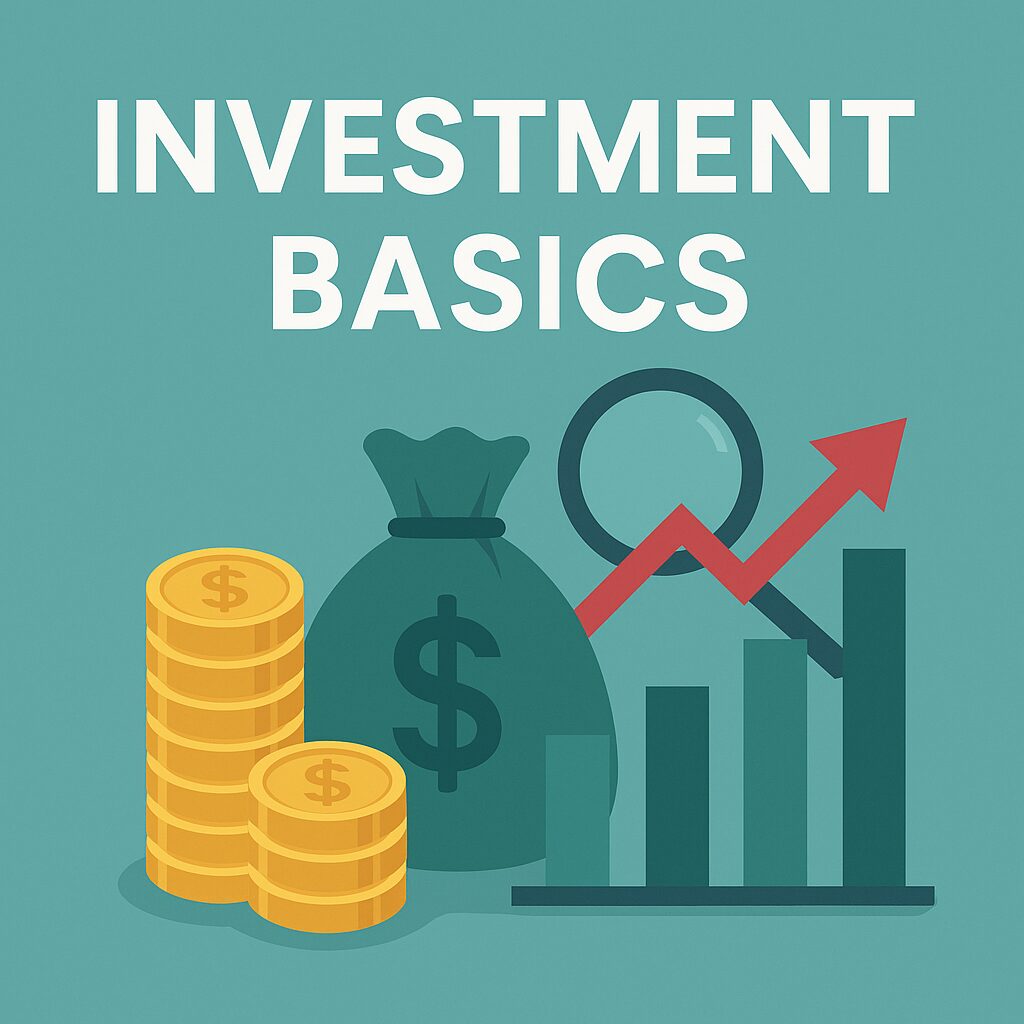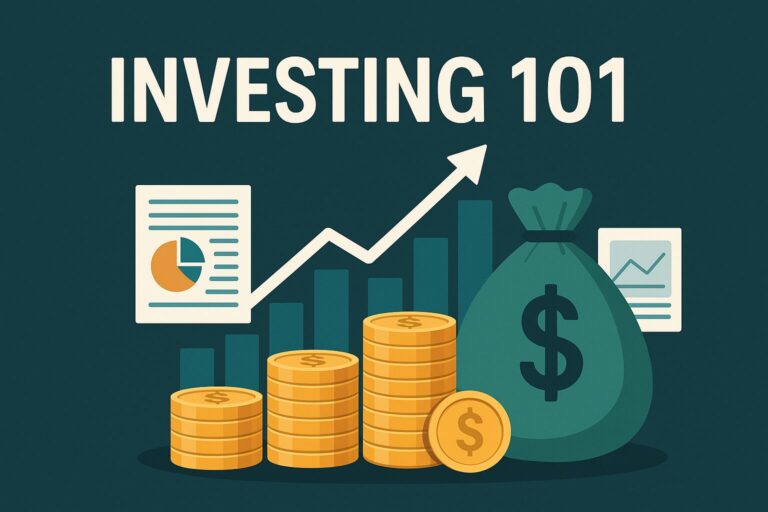Investment Basics
Introduction
Investing is key to generating long-term wealth over saving. The dividend yield is usually higher, and the value of the underlying asset usually appreciates, leading to the price per share increasing. With savings, you only have the money you put in and the interest rate—but inflation will eat away at that value fairly quickly if the yield isn’t high enough.
Savings is your short-term security. It’s a safety blanket. Investing, on the other hand, is long-term growth—putting your money into something that will increase in value and beat inflation.
In this article, you’ll learn:
- Key principles of investing
- Types of investments
- How to get started
- Mistakes to avoid
- The power of compounding
- Next steps you can take today
What is Investing?
Investing is putting your money to work so it makes more money for you. It’s different from speculation, which is more like gambling on a quick return.
When you invest, you unlock the greatest power in the financial world—compounding.
Two ways compounding works:
- Dividend Reinvestment Plans (DRIPs): dividends get reinvested, building more dividends over time.
- Appreciation: stock prices rise over time, often keeping pace with or beating inflation.
👉 Related Reading: Emergency Fund Basics – make sure you’re secure before investing.
Key Principles of Investing
- Risk vs. Reward – Higher returns come with higher risk. A savings account is safe but low yield; stocks are higher risk but higher reward.
- Time Horizon – Short-term vs. long-term goals. Investing works best over decades.
- Liquidity – How fast you can access your money. ETFs are liquid; real estate is not.
- Diversification – Don’t put all your eggs in one basket. Spread across asset classes.
- Inflation Protection – Cash loses value over time, but investments can grow faster than inflation.
👉 Related Reading: Debt Snowball vs. Avalanche – knock out high-interest debt before investing.
Common Types of Investments
- Stocks – Ownership in companies, with growth potential but volatility.
- Bonds – Debt instruments with fixed income, lower risk than stocks.
- Mutual Funds & ETFs – Baskets of stocks/bonds for built-in diversification. ETFs trade like stocks, making them beginner-friendly.
- Real Estate & REITs – Physical property or real estate trusts that generate rental/dividend income.
- Alternatives – Commodities, crypto, collectibles, derivatives. Higher risk—best avoided until you’re more experienced.
👉 Related Reading: ETFs for Beginners
How to Get Started
Step 1: Define Your Goals – Retirement? Wealth building? Write it down.
Step 2: Build a Foundation – Pay down consumer debt and fund your Emergency Fund.
Step 3: Choose the Right Accounts – 401(k), IRA, or taxable brokerage.
Step 4: Pick Beginner-Friendly Options – Broad-market index funds like Vanguard S&P 500 ETF (VOO).
Step 5: Automate Contributions – Use Dollar Cost Averaging (DCA) to stay consistent.
👉 Book Recommendation: I Will Teach You To Be Rich by Ramit Sethi
Avoiding Common Mistakes
- Timing the Market / Chasing Hot Tips – Even pros lose doing this. Stick with the long-term plan.
- Not Diversifying – A single bet can wipe you out. Stick with diversified ETFs/funds.
- Investing Before Building a Foundation – Don’t put money at risk if you haven’t secured your savings and insurance first.
👉 Related Reading: Money Mindset Basics
The Power of Compounding
Compounding is your best friend. Example: investing $200/month at 8% returns over 30 years can grow to over $300,000.
Start early:
- 30 years = ~160 dividend payments reinvested
- 20 years = only ~80 payments → much less growth
👉 Book Recommendation: The Little Book of Common Sense Investing by John Bogle
Next Steps
Keep learning about:
- Asset allocation
- Rebalancing
- Risk tolerance
But above all—get your first brokerage account open today.
As Mel Abraham says in Build Your Money Machine: “You have to be on the field.”
👉 Book Recommendation: The Intelligent Investor by Benjamin Graham
Conclusion
Investing isn’t about luck—it’s about patience and consistency. Start small ($20 or 1% of your paycheck), automate contributions, and let compounding do the heavy lifting.
To explore this concept further, visit our main asset page.
💬 What about you?
Are you just getting started with investing, or have you already opened your first brokerage account? Drop a comment below and share where you are on your investing journey — I’d love to hear your story.



